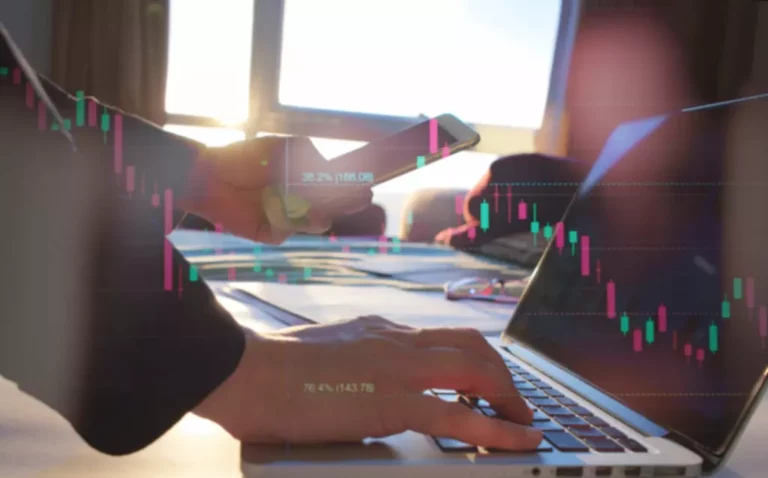Content
One of the most popular market-making algorithmic strategies involves simultaneously placing buy and sell orders. These types of market-making algorithms are designed to capture the spreads. Algorithmic trading is a set of instructions https://www.xcritical.com/ that uses a computer program to automate the process of buying and selling stocks, options, futures, FX currency pairs, and cryptocurrency.
The 10 Best Algorithmic Trading Software & Platforms in 2025
- Using these two simple instructions, a computer program will automatically monitor the stock price (and the moving average indicators) and place the buy and sell orders when the defined conditions are met.
- It is not uncommon to have two algorithms trading at the same time, one exploiting mean-reverting patterns and the other one momentum ones.
- Market-making algorithms provide liquidity to the market by continuously quoting both buy and sell prices, profiting from the bid-ask spread.
- However, profitability depends on various factors such as strategy development, market conditions, risk management, and the quality of execution.
- Despite this, human traders and analysts provide essential insights, ensuring a balanced market.
Our suite of highly accurate indicators on TradingView is precisely crafted to enhance your trading decisions. Although our indicators are originally designed for Know your customer (KYC) manual trading, where your expertise guides your actions, their effectiveness seamlessly extends to the realm of automated algorithmic trading strategies as well. This strategy can be effective in volatile market conditions, as it takes advantage of price fluctuations and seeks to profit from the reversion to the mean. However, it is important for traders to carefully analyze historical price data and set appropriate price ranges to optimize the performance of the mean reversion algorithm. Incorporating the momentum trading strategy requires sophisticated trading software that can crunch vast amounts of price and volume data to detect trends. Real-time analytics are essential to pinpoint the precise timing for entry and exit points to capitalize on the momentum before it fades.

Can You Make Money With Algorithmic Trading?
Algorithmic trading (also called automated trading, black-box trading, or algo-trading) uses a computer program that follows a defined set of instructions (an algorithm) to place a trade. The trade, in theory, can generate profits at a speed and frequency that is impossible for a human trader. Therefore, it can become tedious and time-consuming to do all this without the help of technology. Various algorithms help traders study a stock or any other financial security thoroughly. In fact, most ML and AI algorithms analyze news headlines and social media posts to understand the sentiment trading algorithms examples around the underlying asset or company.
Examples of Algorithmic Trading Strategies
However, institutional players hold a lot of the cards here, and a retail trader would need considerable experience and a sophisticated algorithm to make consistent profits. Investors can profit from trading an asset if they possess more knowledge about its value than other investors. Trading becomes highly strategic when multiple investors are informed about the asset’s value. If these informed investors trade the asset intensively, their private information will quickly be reflected in the market, leading to significant price changes that can render their trading unprofitable. To maximize profits, informed investors may coordinate their trading to allow their private information to be gradually absorbed by the market without causing immediate, substantial price fluctuations.
This will get you more realistic results but you might still have to make some approximations while backtesting. Several segments in the market lack investor interest due to a lack of liquidity as they are unable to gain exit from several small-cap stocks and mid-cap stocks at any given point in time. For instance, we will be referring to our buddy, Martin, again in this section. Martin being a market maker is a liquidity provider who can quote on both the buy as well as the sell side in a financial instrument hoping to profit from the bid-offer spread.

Automation also allows for efficiency by taking advantage of smaller price movements. Algorithms are used in market-making strategies that narrow the bid-ask spread, therefore benefitting both the trader and overall market. The speed of data processing also greatly improves decision-making and execution, fixing the problem of markets changing before you manage to make a trade. Backtesting the algorithm – that is testing it using historical data – may not be necessary for a pre-existing algorithm. That said, thorough testing of how the algorithm works and its suitability for live markets is key. In equities, roughly 60-75pc of trades in American, European and Asian capital markets are done through pre-programmed functions.
This can include monitoring price movements, trading volume, and other market indicators. When the algorithm identifies a potential trade, it will automatically execute the trade based on the pre-defined parameters of the strategy. Traders must also continuously monitor and update their statistical models to adapt to changing market conditions.
As complicated as the algorithms above can be, designers determine the goal and choose specific rules and algorithms to get there (trading at certain prices at certain times with a certain volume). Black box systems are different since while designers set objectives, the algorithms autonomously determine the best way to achieve them based on market conditions, outside events, etc. By understanding these characteristics, traders can make more informed decisions about which markets best align with their day trading strategies, risk tolerance, and overall trading goals. While day trading can be profitable, it’s important to approach it with a solid understanding of the markets and a well-thought-out trading plan.
Algorithmic trading can be used for, among other things, order execution, arbitrage, and trend trading strategies. Algorithmic trading relies heavily on quantitative analysis or quantitative modeling. As you’ll be investing in the stock market, you’ll need trading knowledge or experience with financial markets. Last, as algorithmic trading often relies on technology and computers, you’ll likely rely on a coding or programming background. Using these two simple instructions, a computer program will automatically monitor the stock price (and the moving average indicators) and place the buy and sell orders when the defined conditions are met.
As you are already into trading, you know that trends can be detected by following stocks and ETFs that have been continuously going up for days, weeks or even several months in a row. These strategies are coded as the programmed set of instructions to make way for favourable returns for the trader. The set of instructions to the computer is given in programming languages (such as C, C++, Java, Python). Following which, the computer can generate signals and take the trading position accordingly.
In order to conquer this, you must be equipped with the right knowledge and mentored by the right guide. Machine learning model selection for algorithmic trading involves a careful evaluation of various models to identify the most suitable and effective model which can be sued for making informed trading decisions. Let’s explore the world of momentum trading strategies or trend-following trading strategies. Now, you can use statistics to determine if this trend is going to continue. A black swan catcher is a trading strategy that attempts to tap into the steep market volatility after such an unexpected event. With algorithmic trading, you track and monitor price changes in the derivatives market or other speculative segments — which often record heightened activity during or after a black swan market event.
One very simple automated trading algorithm used in the S&P 500 E-mini futures is programmed to feed buy orders when Emini S&P 500 makes a new intraday high after the open. Momentum-based algos simply follow when there is a spike in volatility or momentum ignition. The algo jumps on that momentum spike with buy or sell orders and a tight stop.
Composer Securities is a member of SIPC, which protects securities customers of its members up to $500,000 (including $250,000 for claims for cash). Explanatory brochure available upon request or at SIPC does not protect against market losses. This material is for informational purposes only and is not intended to be a substitute for consultation with a qualified tax professional before making any investment decisions.
In other words, they are like market crashes that cannot be easily predicted or anticipated based on prevailing economic indicators. Some examples of such black events include the global financial crisis in 2008 and the COVID-19 pandemic in 2020. The market makers, also known as the liquidity providers, are broker-dealers that make a market for an individual instrument. The main job of a market-making algorithm is to supply the market with buy and sell price quotes. We’ve separated these algorithms since they function differently than those above and are at the heart of debates over using artificial intelligence (AI) in finance.